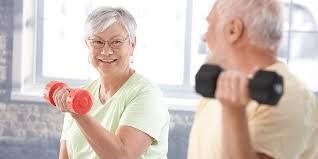Osteoporosis is a common disease affecting over 1 million Australians. This disease makes bones become brittle leading to a higher risk of breaks than in normal bone. Osteoporosis occurs when bones lose minerals, such as calcium, more quickly than the body can replace them. This causes a loss of bone thickness (bone density or mass).
People with osteoporosis are at a much higher risk for fractures, sometimes even with a minor bump or fall.
WHAT ARE BONES?
Bones are living tissue, constantly growing, repairing and rebuilding.
From 0-25, you build more bone than you lose. They’re developing their density, which determines how strong they are.
From 25-50 your bones break down and rebuild at about the same rate. They’re in a state of balance. This is when you’ve achieved your ‘peak bone mass’. Your bones are at their strongest.
From 50 onwards, you start to break down bone faster than you rebuild. Everyone will experience bone loss, but not everyone will develop osteoporosis.
Women are at a much higher risk of developing osteoporosis, especially after menopause.
WHAT CAN CLINICAL EXERCISE DO TO HELP?
People with osteoporosis (or even osteopenia which is the precursor) need weight-bearing exercises to load up the bones and muscles.
In a trial to review the effect of clinical exercise and pilates on bone mineral density (BMD), quality of life and physical performance, they found that BMD increased in the clinical exercise group. There was no change in the control group.
CLINICAL EXERCISE AT PMPP
In our supervised and individualised classes, we can tailor our class to incorporate more weight-bearing into your session. Whether it be in the way of arm weights, changing spring tension allowing for loading on to your bones or incorporating more standing exercises.
We also work on balance and proprioception to help prevent any falls that could lead to fracture.
For more information on our exercise classes click here.
To book an assessment online you can do so here.
~ Tanya
Case study linked here:


